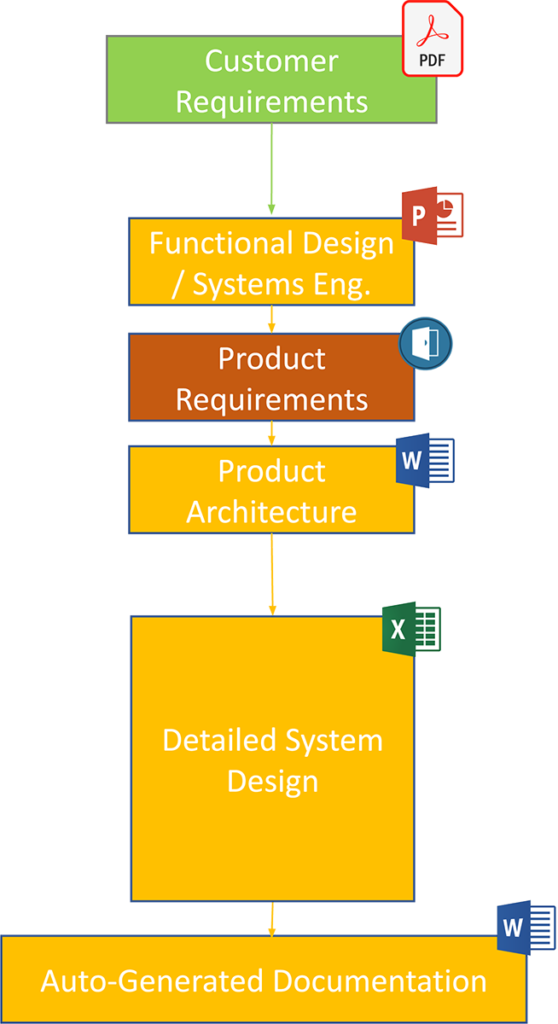Requirements Management only covers a small part of Systems Engineering
Requirements are a core element of the product development lifecycle. However for them to be useful they need to be embedded in a context.
Requirements always require a managed context
Even if a company uses Requirements Management software, its tools stack is usually very heterogeneous:

- Customer Requirements get broken down using functional analysis and systems engineering to derive
- Clear Product Requirements.
- From these requirements, the Product Architecture is derived, which leads to
- Detailed Systems Design (with physical parameters, dependencies, etc.).
- At the end the design has to be documented.
What simple requirement systems don’t cover
A simple requirements management system (like DOORS or Jama) will only capture a small part of this process. All other aspects of the engineering lifecycle have to be created, maintained and kept in sync manually, which is time consuming and leads to critical design mistakes.
Zooming out of this process, there are more associated activities linked, which today are covered by even more tools and manual processes in the over-all systems engineering domain:

- Engineering Planning is a continuous process and the same is true for
- Verification and Validation activities and
- Technical Change Management.
- An additional challenge is maintaining the detailed systems design in sync with external Simulation Tools.
Each interface and independently maintained tool is an additional error-prone source for re-work. Simple requirement management systems don’t solve these problems.
An integrated solution to save time and prevent costly mistakes is the introduction of Engineering Information Management (EIM) Systems that fulfull all the above functions within a single tool and therefore digital thread.